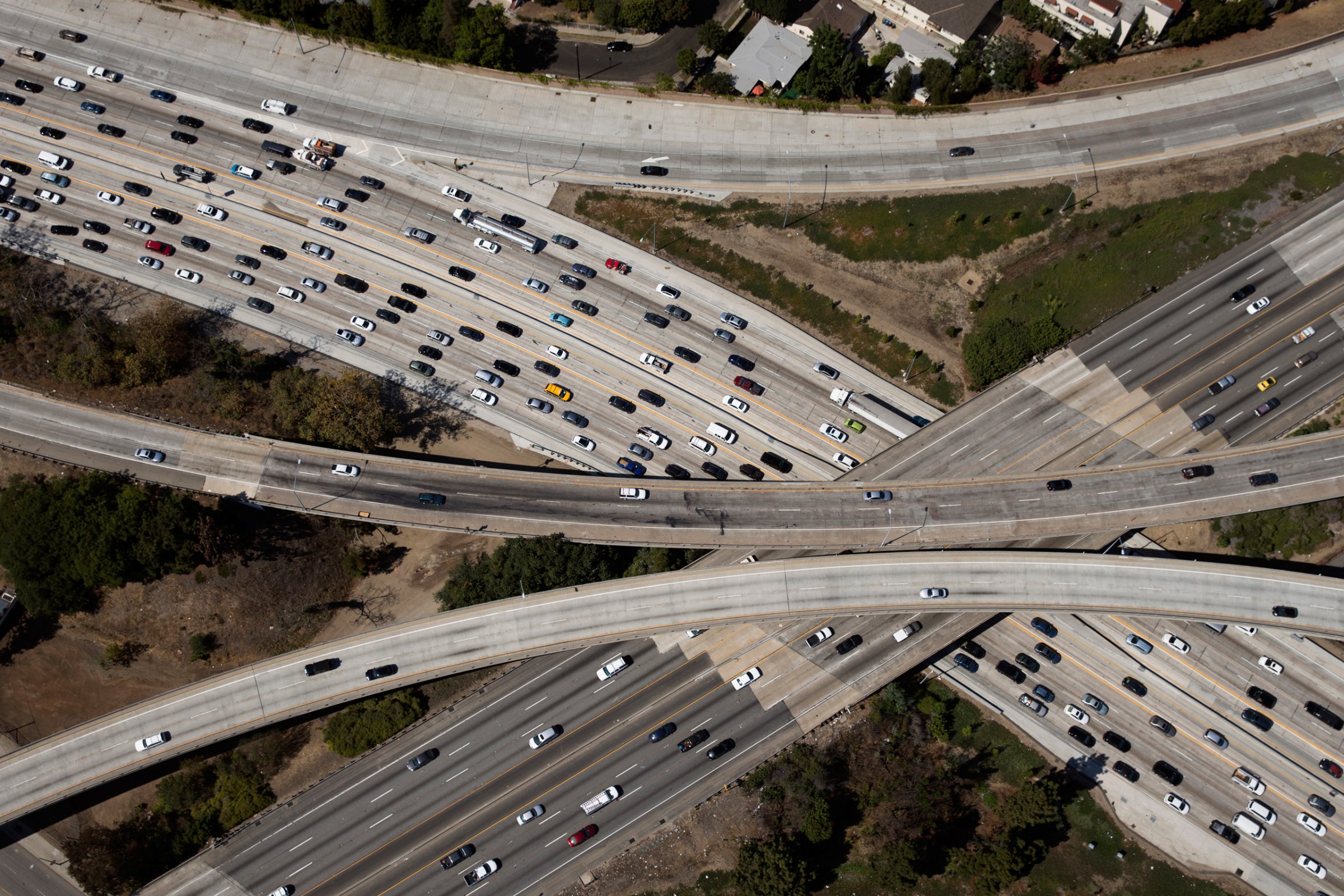
Susan Shaheen knows carpools. For 20 years she’s been studying what transport gurus call shared mobility, dissecting factors that make it successful, like shorter wait times. Though you might think choosing how to get to work is simple, Shaheen will tell you that especially in urban areas, there are countless factors in play, from the time of day you’re on the move to whether you own a smartphone. And more than any of the tech executives giving speeches lately about how we all should rethink our relationship to our cars, she knows just how revolutionary that could be.
Walking the halls of one of the nation’s oldest departments dedicated to transportation research, at the University of California, Berkeley, the engineering professor wonders how our lives would have turned out if the Model T had been marketed as something to be shared, not owned home by home. Would our vehicles still be idle an estimated 95% of the time? Would we still waste collective billions of dollars and hours every year while sitting in traffic, as 76% of workers commute alone? Yet Shaheen’s most tantalizing questions turn not on the past but on the present. “Are we at a juncture that’s similar to when the automobile was being proposed?” she asks. And if the arrival of self-driving cars offers us a chance to rewrite the rules, how should we do things this time around?
Numbers will help determine the answers, and so Shaheen and her team have embarked on a landmark study examining the latest wave of carpooling in the U.S., one organized not through bulletin boards over a period of days but through smartphone apps in real time. Armed with the data that ride-app companies Uber and Lyft have agreed to provide, Shaheen aims to calculate the two companies’ environmental impact, including the effects of the cheaper pooling options (Lyft Line and UberPool) that the firms have been touting as solutions to America’s traffic and idle-asset problems.
If how we commute is algebra, figuring that out is calculus. Shaheen will have to determine, for instance, how many cars those companies have put on the road as they’ve attracted drivers to their platforms, compared with how many they’ve inspired riders to leave at home or not buy in the first place. She’ll survey drivers and passengers in several U.S. cities, weighing cars’ occupancy levels and tallying net vehicle-miles traveled. Among the big questions: Are we sharing more? And if so, what are we gaining? Her final figures will back up or undercut conclusions that Uber and Lyft have already come to. “We can cut congestion, pollution and parking by getting more people into fewer cars,” Uber CEO Travis Kalanick avowed in February. “A platform like Lyft can ultimately achieve significant impacts in congestion and emissions reduction,” says Emily Castor, Lyft’s director of transportation policy.
Shaheen’s analysis remains to be seen, and the net effect could change over time. But those firms are already helping to challenge America’s auto-dependency problem in at least one way. “These apps are starting to slowly devolve the perception that getting into a car with somebody you don’t know is the wrong thing to do,” Shaheen says. And that kind of trust is a prerequisite for widespread carpooling, the kind we’ll all be doing if we’re going to share–and not own–automated vehicles that swoop by to pick us up at our drivewayless homes. Which may be the commute of the future.
More Must-Reads from TIME
- Why Trump’s Message Worked on Latino Men
- What Trump’s Win Could Mean for Housing
- The 100 Must-Read Books of 2024
- Sleep Doctors Share the 1 Tip That’s Changed Their Lives
- Column: Let’s Bring Back Romance
- What It’s Like to Have Long COVID As a Kid
- FX’s Say Nothing Is the Must-Watch Political Thriller of 2024
- Merle Bombardieri Is Helping People Make the Baby Decision
Contact us at letters@time.com